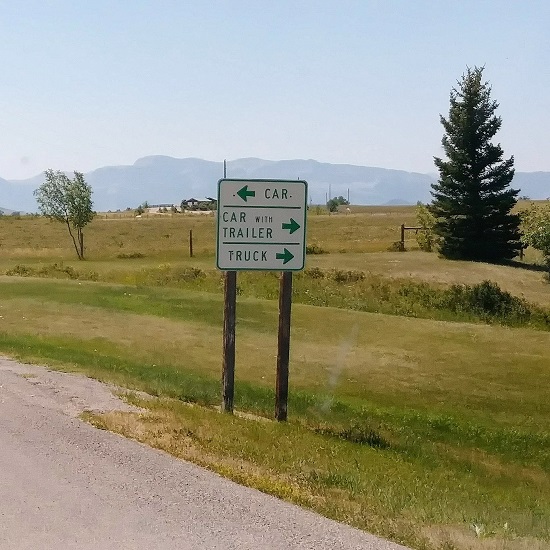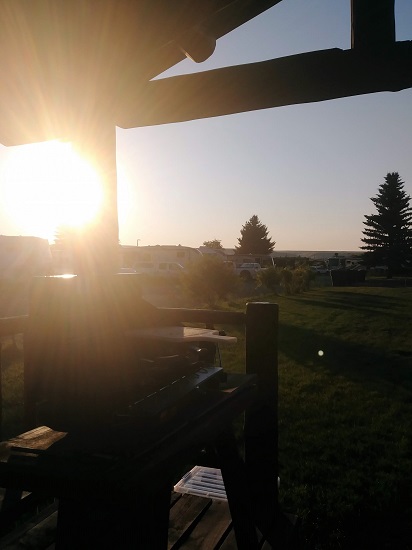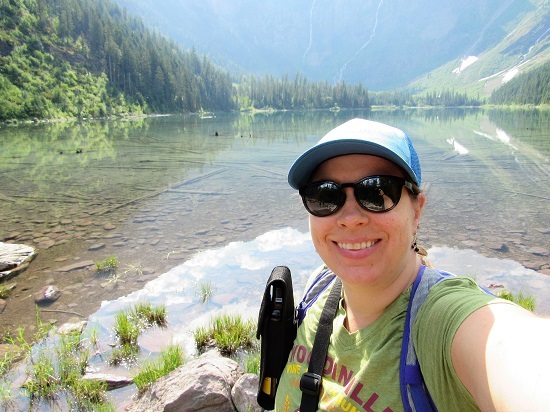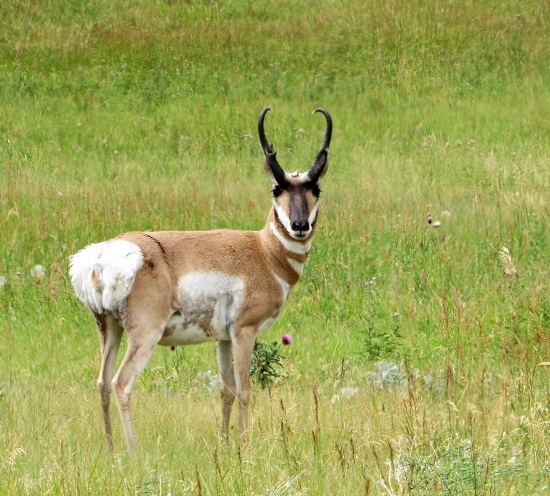Day 6, Saturday, July 21, 2018
I slept in a little that morning – maybe because it was Saturday, maybe because the early morning sunshine finally warmed me up enough to sleep well. I had oatmeal and coffee for breakfast. Camping tip – I brought an electric kettle on this trip and it was one of the best items to have! Even if I didn’t have electric at my campsite (which I usually didn’t), I could still tote that little kettle into the bathroom, plug it in and have hot water in 90 seconds! No need to heat up water on the camp stove – it was a great morning time saver!
I read a bit during breakfast and enjoyed the morning sun.
My destination for the day was Philipsburg, Montana. Philipsburg was a mining town founded in the late 1890s; after the mines and the lumber mills went dead in the 1980s, the town rebranded itself as a tourist destination. It capitalizes on its historic downtown main street, as well as the sapphire mines nearby. There are a couple of shops where you can “mine” for sapphires, sorting through bags of gravel and finding the valuable stones.
First I checked out the Montana Law Enforcement Museum. It was a small museum; just one small room in a storefront. They had artifacts and exhibits on the various Montana police, including information on officers killed in the line of duty, old uniforms and equipment used by departments, and even an old jail cell. The museum is free to visit, although they do request donations.
I was getting hungry for lunch at that point, so I found the Philipsburg Brewing Company. They are located in downtown Philipsburg, in an old bank building that was built in 1888. They have maintained the historic flavor of the building too! They don’t serve food, so I got takeout from the UpNSmoking BBQ House down the street and brought it back to the brewery to enjoy. I ordered a Gonk Ale – it was delicious!
After lunch, I went to Gem Mountain. I bought a $30 bucket of gravel to sort through. They set you up at a table and show you how to go through your gravel to find the sapphires hidden inside. It was fun digging through the dirty gravel! It was certainly a good way to spend a couple of hours, even if I didn’t find “the big one”.
On the way back to camp, I drove the Pintler Veteran’s Memorial Highway; it passes through the town of Anaconda at the base of the Anaconda mountain range. Anaconda was once the home of the Anaconda Copper Mining Company, and this mine produced from the 1880s all the way until 1980.
Anaconda is an interesting story in itself, also holding mines in Chile which were seized by the Chilean government after socialist President Salvador was elected in 1970. I was interested in that connection since I lived in Chile for a time during college. It’s a small world, and things have a tendency to all be tied together. But back to the Montana story – after the Atlantic Richfield Company purchased the mine in 1977, it turned out that ARCO just didn’t have the experience in hard rock mining, and the price of copper had dropped enough to make the mine unprofitable. ARCO closed down the mine in 1980. The site is currently listed as a Superfund site, due to the incredible amount of toxic waste that resulted from the years of mining. ARCO and British Petroleum (BP), which later bought out ARCO, have spent millions decontaminating the site, but the work is far from done.
You can still see the 585 foot tall Anaconda smokestack, which was once the tallest masonry structure in the world. When I was there, there was a herd of deer grazing; I saw 10 or 12 in the few minutes of my visit.
I headed back to the campground to have some leftovers for dinner. Then I blogged and chatted with a few people at camp before bed. A relaxing day on the road…


































































































